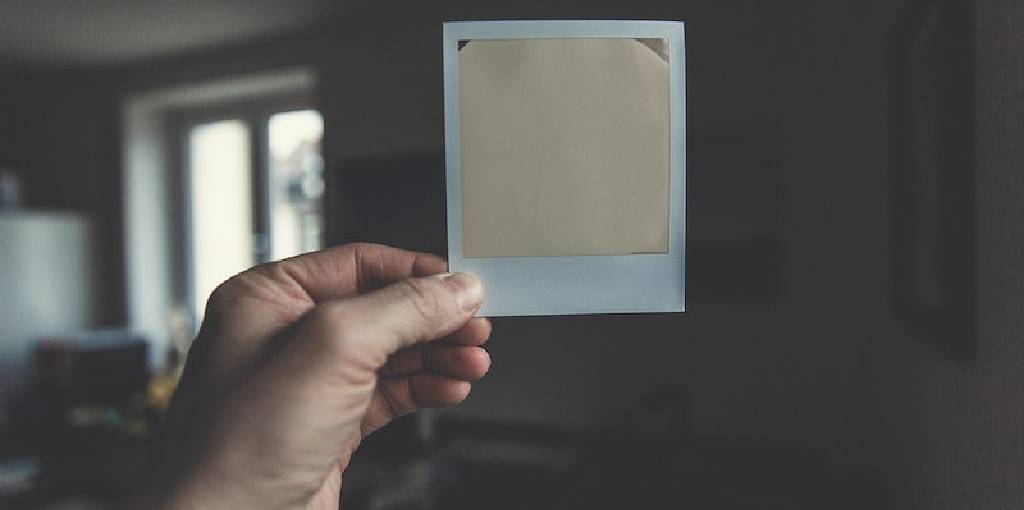Introduction
Polaroid photography has a rich history, capturing nostalgic moments and preserving them in a distinctive format. The unique charm of Polaroid pictures lies in their tangible nature, with instant gratification of a physical print. However, it can be frustrating when these cherished moments turn out darker than expected. In this article, we will explore the common causes of dark Polaroid pictures and provide you with effective methods to fix and prevent such issues. We are going to explore how to fix a dark polaroid picture.

Understanding the Common Causes of a Dark Polaroid Picture
Dark Polaroid pictures can be attributed to various factors, including:
Insufficient Lighting During the Shot
Inadequate lighting conditions during the moment of capture can result in underexposed photos. This occurs when not enough light reaches the film, causing the image to appear darker than intended.

Incorrect Exposure Settings
Misconfigured exposure settings on your Polaroid camera can lead to dark pictures. Whether it’s unintentionally setting a slower shutter speed or selecting the wrong aperture, improper exposure settings can negatively impact the brightness of your photo.
Malfunctioning Flash or Lack Thereof
The built-in flash on Polaroid cameras plays a crucial role in providing additional light when needed. However, if the flash malfunctions or your camera lacks a flash altogether, your pictures may turn out darker than desired.
Aging Film and Expired Film Packs
As time passes, Polaroid film ages, potentially losing its sensitivity to light. Using expired film packs or films that have not been stored properly can result in darker images due to decreased light sensitivity.
Evaluating the Darkness Levels in Your Polaroid Picture
Assessing the darkness levels of your Polaroid picture is essential for determining the best course of action to fix it. By examining the image closely, you can differentiate between underexposed and completely dark pictures and identify various levels of darkness:
Differentiating Underexposed and Completely Dark Pictures
Underexposed pictures contain some visible details, albeit with decreased brightness. On the other hand, completely dark pictures lack any discernible details and are almost entirely black.

Identifying Various Levels of Darkness
Darkness in Polaroid pictures can vary in intensity. Some may appear moderately dark with faint details, while others may be extremely dark, making it challenging to retrieve any identifiable elements.
Assessing the Salvageability of a Dark Polaroid Photo
Examining the severity of darkness in your Polaroid picture helps you gauge its salvageability. While slightly dark pictures can usually be fixed easily, extremely dark ones may require more advanced techniques for restoration.
Preparations before Attempting any Fixes
Before diving into the techniques for fixing dark Polaroids, it’s crucial to make necessary preparations:
Gathering Essential Supplies
To effectively fix dark Polaroid pictures, ensure you have the necessary supplies ready, including a clean microfiber cloth, digital photo editing software, bright light sources, and additional Polaroid film.
Selecting an Appropriate Workspace
Choose a suitable workspace with ample lighting to evaluate and work on your Polaroid pictures. Proper lighting conditions will help you accurately discern the darkness levels and apply the necessary fixes.
Handling Polaroid Pictures Delicately
Polaroid pictures are delicate, and mishandling them can cause permanent damage. Always handle them with clean and dry hands, avoiding direct contact with the image area to prevent smudges or fingerprints.
Simple Fixes for Slightly Dark Polaroid Pictures
For slightly dark Polaroid pictures, you can try the following simple fixes to enhance their brightness:
Utilizing Ambient Light for Brightening the Photo
Take advantage of natural light sources or well-lit indoor spaces to illuminate your dark Polaroid pictures. Position them near a window or under a lamp without exposing them to direct sunlight, allowing the ambient light to brighten the image naturally.

Adjusting Exposure Levels on Polaroid Cameras
Review the exposure controls on your Polaroid camera and ensure they are correctly set before capturing each picture. Increasing the exposure level can help mitigate darkness issues and yield brighter results.

Using External Light Sources Strategically
Supplementing the existing lighting conditions with external light sources can significantly improve the brightness of your Polaroid pictures. Experiment with positioning additional lamps or portable LED lights to provide targeted illumination to the dark areas.
Advanced Techniques for Rescuing Extremely Dark Polaroid Pictures
When dealing with extremely dark Polaroid pictures, you may need to utilize advanced techniques for optimal results:
Employing Digital Photo Editing Software
Scan your extremely dark Polaroid pictures and utilize digital photo editing software to restore brightness and enhance details. Programs like Adobe Photoshop or Lightroom offer various tools and techniques to recover information from underexposed images.
Leveraging Image Enhancement Tools and Filters
Within photo editing software, explore specific image enhancement tools like exposure adjustments, highlights, and shadows recovery tools. Additionally, experimenting with filters designed to brighten or correct exposure can further restore the lost details.
Restoring Details Through Manual Adjustments
Take a hands-on approach by manually adjusting the brightness, contrast, and saturation levels of your extremely dark Polaroid pictures. By carefully fine-tuning these settings, you can bring back lost details and revive the vibrancy of the image.
Exploring Specialized Methods for Enhancing Dark Polaroid Images
For those seeking more specialized methods, consider the following techniques to enhance dark Polaroid pictures:
Using Diy Lightboxes or Light Tables
Crafting a DIY lightbox or utilizing a light table can help improve the visibility and brightness of your dark Polaroid pictures. These setups provide uniform backlighting, allowing you to appreciate the intricate details and colors even in dark images.
Employing Scanning and Post-processing Techniques
By scanning your dark Polaroid pictures and utilizing post-processing techniques, you gain more control over adjusting exposure, brightness, and other essential parameters. This approach offers a comprehensive solution for enhancing the overall quality of your images.

Infusing Creativity Through Artistic Retouching
If you prefer to add a touch of artistic flair, explore retouching techniques to transform your dark Polaroid pictures into unique works of art. Experiment with color grading, selective adjustments, and creative filters to give your images a distinct style while brightening them.
Addressing Lighting Issues in Polaroid Land Cameras
Polaroid Land Cameras may encounter specific lighting issues that contribute to dark pictures. Consider the following steps to troubleshoot and fix these problems:
Verifying Correct Flash Operation
Ensure that the flash mechanism in your Polaroid Land Camera functions correctly. Check if the flashbulb or flashbar ignites properly when capturing a photo. If not, it may be necessary to replace the faulty components.
Replacing Flash Bulbs or Flashbars
In the case of malfunctioning flashbulbs or flashbars, replacing them with new ones can resolve lighting issues. Refer to your camera’s manual or consult a professional to find compatible replacement parts.
Accommodating External Flash Systems
If your Polaroid Land Camera lacks a built-in flash or requires additional illumination, consider integrating external flash systems. These systems provide more control over lighting conditions, allowing for better exposure and brightness in your Polaroid pictures.
Overcoming Darkness Issues with Polaroid OneStep Cameras
Polaroid OneStep Cameras are known for their simplicity and ease of use, but they too can encounter darkness issues in certain situations. Follow these steps to address darkness problems with your OneStep Camera:
Ensuring Proper Exposure Settings
Double-check that the exposure settings on your Polaroid OneStep Camera are configured correctly. Refer to the camera’s manual for guidance on adjusting exposure compensation or selecting appropriate exposure modes to prevent underexposure.
Testing and Replacing Batteries
Dark pictures can be a result of low battery power in your Polaroid OneStep Camera. Test the batteries or replace them with fresh ones to ensure optimal performance, as weak batteries may affect the camera’s ability to expose correctly.
Enhancing Lighting Conditions With Add-on Accessories
To improve lighting conditions while using your Polaroid OneStep Camera, consider utilizing add-on accessories such as detachable flash units or external light sources. These accessories can supplement the camera’s built-in flash, providing better illumination and reducing the likelihood of dark pictures.
Troubleshooting Dark Polaroid Images in Modern Instant Cameras
Modern instant cameras offer various features to address darkness issues. Follow these troubleshooting steps to fix dark Polaroid pictures in your modern instant camera:
Investigating Exposure Compensation Features
Explore your camera’s exposure compensation settings, as these allow you to manually adjust the exposure levels to compensate for inadequate lighting conditions. Experiment with different compensation values to achieve optimal brightness in your pictures.
Adjusting Flash Settings for Different Environments
Pay attention to your camera’s flash settings and select the appropriate flash mode for different environments. Some cameras offer specific modes for indoor, outdoor, or low-light situations, ensuring proper exposure and minimizing the chances of dark or underexposed pictures.
Understanding and Resolving Compatibility Issues
Ensure that the film you use is compatible with your modern instant camera model. Different films have varying light sensitivity, and using an incompatible film can lead to darkness issues. Consult the camera’s manual or reach out to the manufacturer for guidance on appropriate film selection.
Tips for Preventing Dark Polaroid Pictures in the Future
Prevention is always better than a cure. To avoid dark Polaroid pictures in the future:
Mastering Exposure Techniques
Develop a solid understanding of exposure techniques, including aperture, shutter speed, and ISO settings. With practice, you’ll be able to adjust these settings accurately, ensuring proper exposure and avoiding underexposed or dark pictures.
Utilizing Built-in and External Flash Effectively
Learn how to utilize built-in and external flash effectively to eliminate lighting issues. Experiment with different flash modes, flash intensities, or flash gels to achieve desired brightness and highlight details in your Polaroid pictures.
Storing and Handling Polaroid Film Properly
Store your Polaroid film in a cool and dry environment to maintain its optimal quality. Additionally, handle the film carefully, avoiding any unnecessary exposure to light or extreme temperatures that could compromise its sensitivity.
Summary
In summary, understanding the causes of dark Polaroid pictures is crucial for effective fixes and prevention. By evaluating darkness levels, utilizing simple and advanced techniques, addressing lighting issues in different camera models, and implementing preventive measures, you can rescue and prevent dark Polaroid pictures while preserving the charm and allure of this unique medium. We have explored how to fix a dark polaroid picture.
You may read also – How to Fix a White Polaroid Picture


